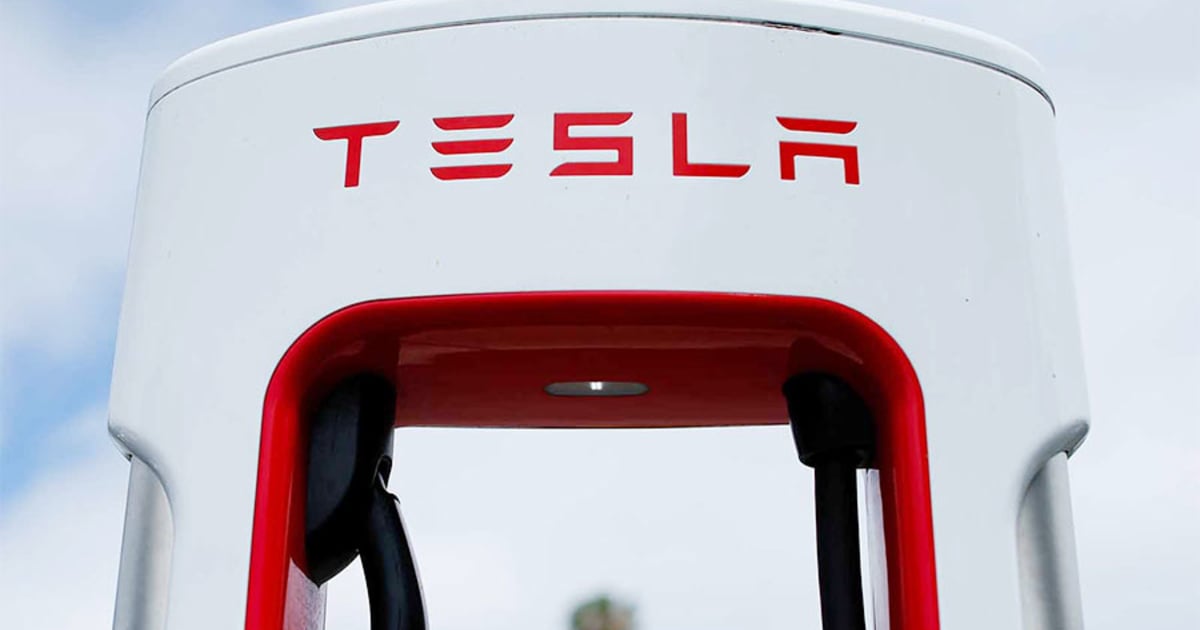
Two pathways are emerging as electric vehicle charging infrastructure expands across the U.S. Automaker partnerships will determine whether those technologies will coexist or whether one will push the other out, like VHS and Betamax.
Four months ago, the U.S. was heading toward a standard way of EV charging with chargers other than those built by Tesla using a common connector to be eligible for federal funding. Tesla’s charging agreements with Ford Motor Co. and General Motors throw that push to standardization into question and could further fragment the country’s charging infrastructure, at least for now, analysts say.
GM and Ford reached agreements with Tesla that will allow the automakers’ EVs to charge at 12,000 Tesla Superchargers starting next spring. Ford announced its agreement May 25, and GM followed two weeks later.
Before Ford’s announcement, the Combined Charging Standard was becoming almost universal charging technology for non-Tesla chargers. EV chargers built with funds from the $5 billion National Electric Vehicle Infrastructure formula program must have a CCS connector.
“We thought CCS won in the U.S. because of NEVI,” said Loren McDonald, CEO of consultancy EVAdoption. “Now some people say [Tesla’s standard] has won. I’m not sure that’s true. We might have this split.”
The demise of CCS could be imminent if other automakers follow Ford and GM by adding Tesla charging sockets, called the North American Charging Standard, to their vehicles, analysts said.
CCS ports run one connection between the charger and the EV, said Conrad Layson, senior alternative propulsion analyst at AutoForecast Solutions. Tesla’s NACS port exchanges more information and usually leads to a smoother charging experience, he said.
Charging networks and charger manufacturers are racing to update their systems with Tesla’s NACS connector. Under NEVI standards, each charging port must have a CCS connector. However, ports are allowed to have other nonproprietary connectors, such as Tesla’s NACS, if the port is also capable of charging a CCS-compliant vehicle.
“The goal of NEVI was to move the industry toward CCS,” said Amaiya Khardenavis, EV charging infrastructure analyst at Wood Mackenzie, an energy research and consultancy business. “Now since NACS is the most adopted, which way are we going to go and does the NEVI rule change?”
Charging companies aren’t waiting to find out. Many said they are adding NACS connectors to their chargers.
EVgo already has about 600 chargers integrated with the Tesla connectors and will continue to “deliver the reliable and convenient charging experiences needed for all EVs,” the company said in a statement.
Several charging companies, such as ChargePoint, Flo, FreeWire and ABB E-Mobility, said they would support technology that makes charging more convenient.
Volkswagen Group’s Electrify America, one of the largest charging networks, said it would listen to customers and continue to evaluate the market.
Tesla’s Supercharger fast charging network dominates the U.S. market. Through the first five months of this year, Tesla opened an average of 378 fast charging ports per month, compared with 273 for all the other charging operators combined, according to EVAdoption.
Other brands “will be forced to join this consortium,” creating a U.S. standard, Alexander E. Potter, senior research analyst at Piper Sandler & Co., wrote in a research note.
The firm estimates Tesla will make more charging revenue from non-Tesla owners than Tesla owners by 2030 if non-Tesla owners are charged a slight premium.
Tesla, Ford and GM haven’t shared important details of their agreements, such as plans for data sharing and bidirectional charging capability. Bidirectional, or vehicle-to-grid, charging allows electricity to run in both directions, from the grid to the vehicle and from the vehicle to the grid.
Tesla’s NACS connector does not support bidirectional charging, so drivers who want to use that feature would need a CCS socket, said Khardenavis. Tesla has said it could add bidirectional charging, but CEO Elon Musk said he doubted many EV owners would use the feature. Both Ford and GM have touted bidirectional charging options, suggesting the EV battery as a backup power source to customers’ homes during a power outage.
Bidirectional charging access is just one reason that the two charging technologies must coexist to serve today’s EV owners, said Layson.
“The anticipated changeover will make CCS obsolescent,” Layson said, “but not remove it overnight from the market.”
— Audrey LaForest contributed to this report.

